
Sign in
Sign in to save favorite properties and equipment, save your search parameters and more
Don’t have an account yet? Sign Up Now
Sign up
Already have an account? Login Now


Sign in
Sign in to save favorite properties and equipment, save your search parameters and more
Don’t have an account yet? Sign Up Now
Sign up
Already have an account? Login Now
Lance Harvey and Sandy Ballou know roping. They were both born into the life – generational ranchers who grew up roping calves and wrestling steers. Lance rodeoed professionally until he was 24, while Sandy spent plenty of time ranch roping as his family made its way in the horse business, owning boarding and training facilities.
Today, both men put their ranch life to work. Lance owns Western Fence Construction, based in California. Western Fence creates state-of-the-art equine and livestock facilities. His work includes everything from barns and buildings to professional quality riding arenas, fencing, and solar water systems.
Sandy is also a child of the West. Born and raised in California, he moved with his family to Cody, Wyoming about six years ago. While he was never a professional rodeo cowboy, he knows his way around ranches and arenas plenty well. He has received gubernatorial appointments from both Gov. Arnold Schwarzenegger and Gog. Edmond G. Brown to serve on the 17th District Agricultural Association fair board. He was also a member of the Nevada County Farm Bureau board of directors and these days, you’ll find him on the rodeo committee for the Cody Stampede.
Lance and Sandy recently combined forces to offer up some of their tips for how to build a roping arena on your ranch, recreational, or equine property.
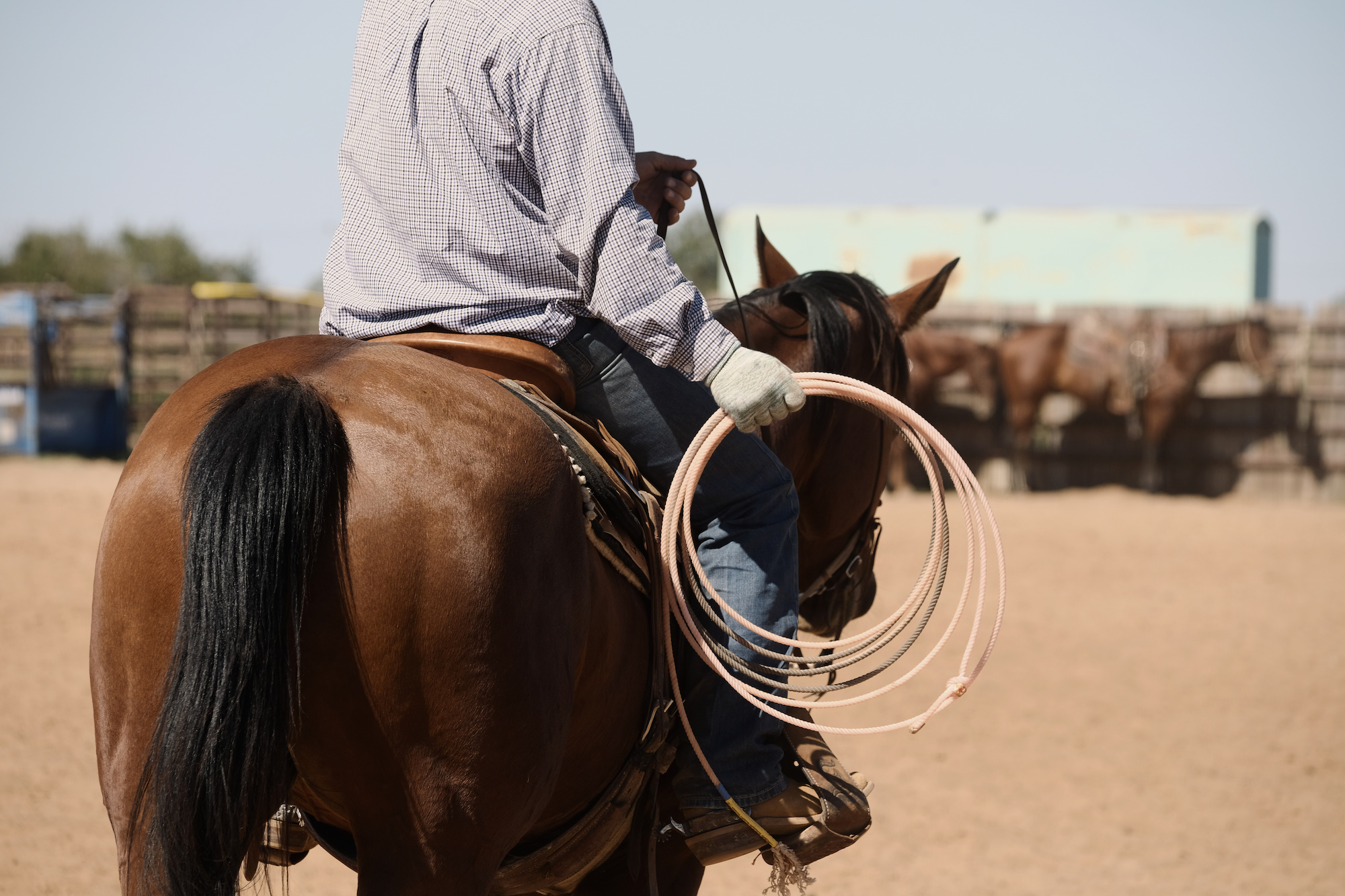
For the true horse lover or professional rider, the benefits of having a roping arena on your property are obvious. Being able to work with your stock without having to drive to another facility is a nice luxury – a dream come true for many recreational real estate owners. It saves time and provides a consistent environment for you and your animals, reducing the need to trailer your horses.
But that’s not all. The size and structure of roping arenas lend a certain amount of versatility that can apply to a variety of circumstances, benefits, and income opportunities. If you’re looking for ways to leverage your roping arena, consider renting it to other horse owners in the area. Disciplines don’t have to be restricted to roping specifically. You can reach out to local equine clubs that include a variety of riding styles and needs, such as show jumping and dressage. Equine therapists can also make use of your roping arena, providing a safe space for treatment of animals.
Additionally, roping arenas can make for fun and unique event venues, which in turn raises awareness of your property for future rental or sale opportunities. Weddings, celebrations, fundraisers, local rodeos and roping competitions, and other special events are excellent revenue generating opportunities.
Once you’ve decided it’s time to build a roping arena on your property, there are some key factors to consider. Sandy makes the first one easy to remember, “Room! Make sure you have plenty of room.” And he doesn’t mean just enough square footage or acreage for the arena itself. “People don’t always have an understanding of how big an arena you need or should have. It doesn’t take just the space of the arena. You’ve gotta have some buffer as well; you need room for barns and turn outs and so forth.”
Lance emphasizes the importance of proper drainage, putting it at the top of his consideration list. “If you don’t have good drainage, you’ve got the biggest mess you’ve ever seen. You can have the nicest, most well-built arena known to mankind, but if the drainage isn’t right, nothing else matters. Everything goes from the bottom up, just like a house foundation. Once you start off with your grade and your drainage, then you can move onto your footing and go up from there.”
When it comes to topography, the flatter the better. Sandy advises looking for a flat area that doesn’t require too much grading while Lance points to these initial considerations being the focal point of any conversation he has with new clients who want to build a roping arena on their property. “We put everything on a 3D CAD and lay it all out so the client can actually see what their place is gonna look like and what they need for space, barns, tack rooms, and turn out.” To break it down, Lance has three main points of consideration – your drainage, your dirt work, and your grade and percentage of fall of your arena.
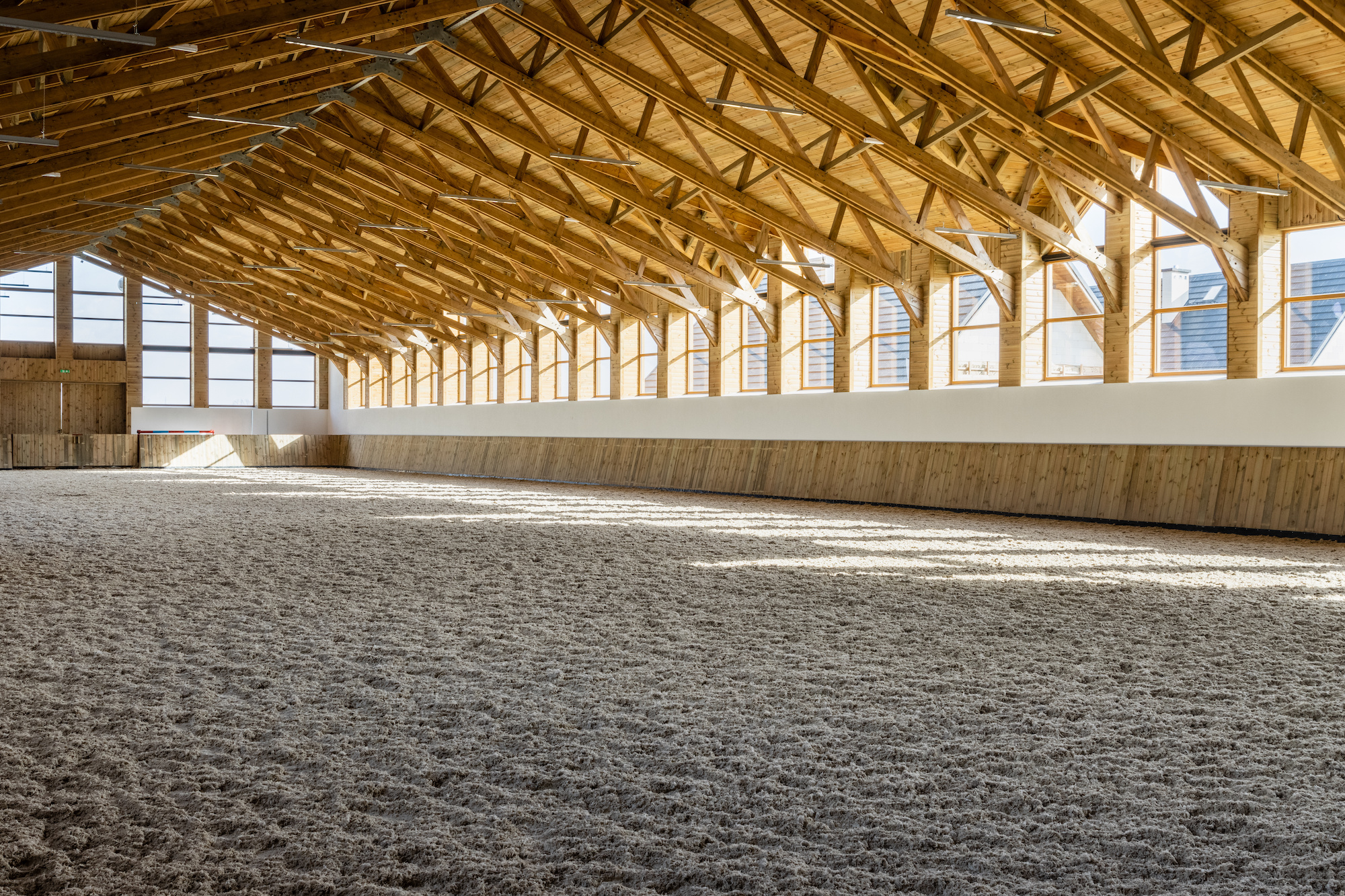
When you’re thinking about the kind of arena you will build, one big question is whether to install an indoor or an outdoor structure. Indoor arenas might seem more valuable to someone who lives in, say, Minnesota or North Dakota, but these types of arenas are becoming just as important to property owners in hot climates as they provide a way to get you and your animals out of the heat.
As a rule of thumb, an indoor arena is a luxury unless you’re going to use it as an event center. Professional horse trainers often build them to provide consistent cover over time. But of course, weather and the elements do play a factor. Sandy adds, “Where you are in the country makes a big difference for what kind of arena you put up. In a lot of places, a simple covered arena is satisfactory, but in super cold country, those won’t do you any good. You’re gonna need to go fully enclosed.”
Once you’ve assessed your property and chosen a location that will allow for your roping arena and all supporting structures and turn outs, it’s time to decide on the ideal size. “The number one thing is finding your width,” Lance says. “The standard size ropery is 150’ x 300’.” From there, it’s best to work with experts like Lance and Sandy to design proper roping chutes, catch pins, and boxes, always keeping in mind your end use.
When it comes to roping arena design, Lance offers this wisdom, “We try to create an arena that is user friendly. One where you don’t have to get off your horse; you can bring up your cattle. You don’t have to worry about when the chute is being loaded. Everything is right there. We can even put as much as cup holders on the fence if you need them. You could go really serious, or you could have a party there!”
Make sure to consider the following elements when designing your roping arena:
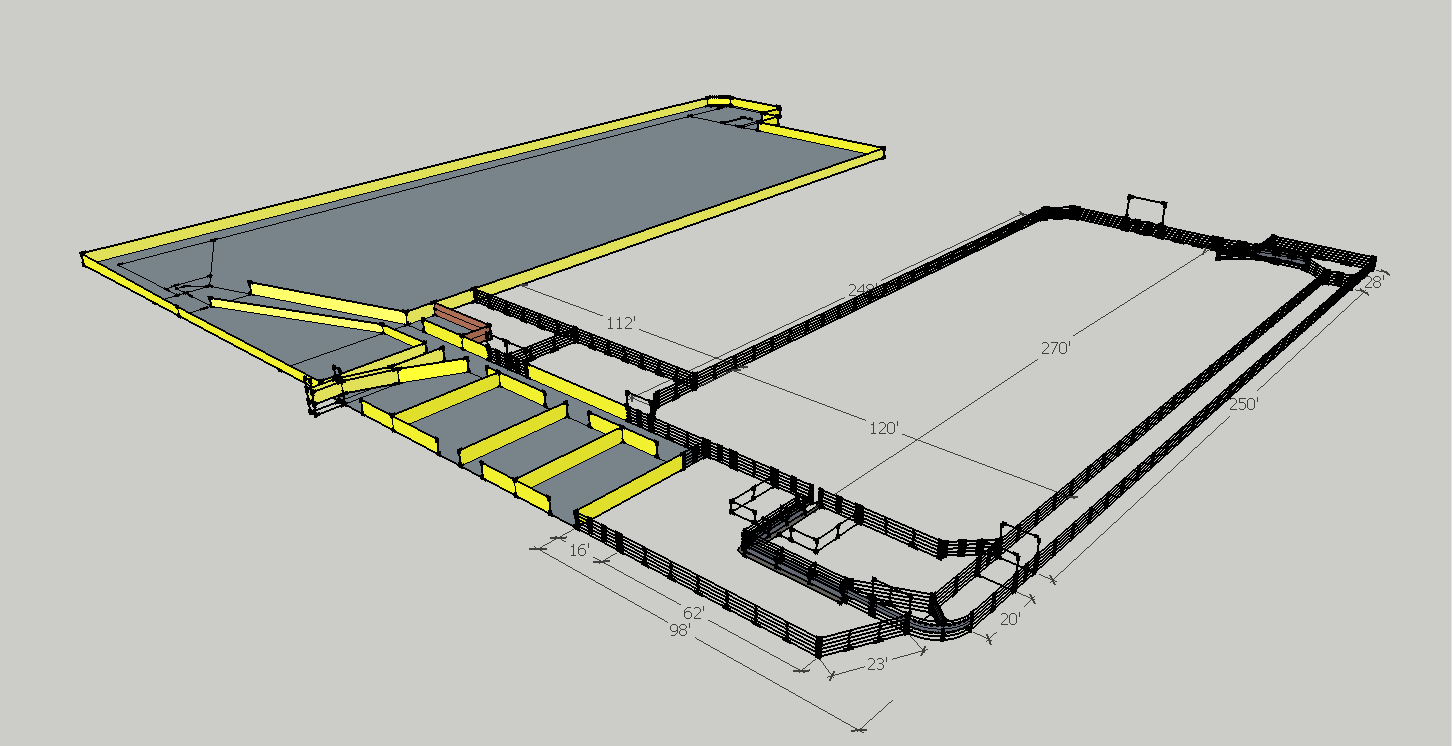
As Lance said, a well built roping arena/horse facility starts from the ground up. It’s important to think about the following when building a roping arena on your property:
One of the most important choices you’ll make when installing a roping arena is the footing, which varies a lot by geography. Sandy says, “If you’ve got footing that’s way too deep and doesn’t properly work, you’re going to have animals going down. So maintaining footing is a primary component of any arena. The fencing has to be good, but the footing has to be excellent.”
There are quite a few footing additives available, including crumb rubber, shredded felt, and poly microfibers. For roping, you want about two to four inches of footing material that is nice, loose and soft (avoid clay!). There should be a packed base beneath the initial footing materials. Providing a well-packed base means you don’t need to replace or maintain footings as frequently. Ensure your footing remains healthy and supportive by installing the proper drainage. No one likes a flooded arena.
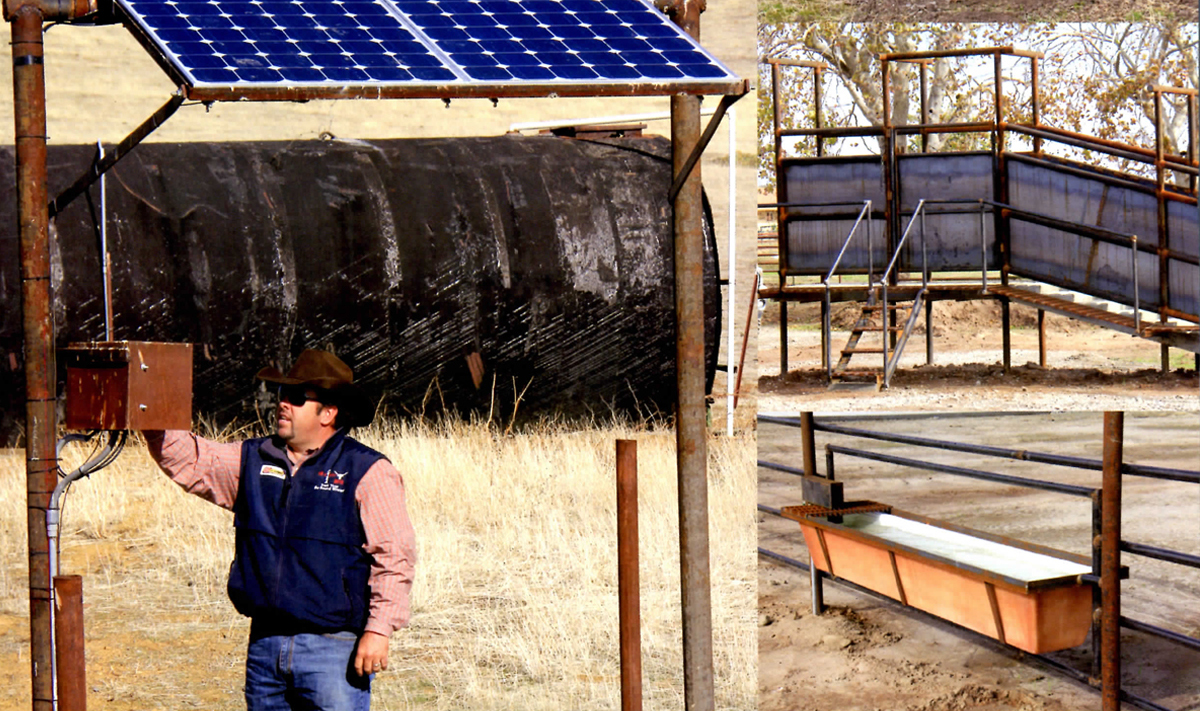
Once you’ve built your roping arena, it’s important to make sure you maintain it properly, both for the value of your property and the safety of riders and animals, always making sure your footing isn’t too deep or too hard. Work to keep your ground and footing maintained – a tractor with a drag or a groomer such as Black Widow is a good way to go about this. Pack your arena before a rain. If it drains properly, there shouldn’t be any standing water. On the flip side of that, it is important to keep some moisture in the arena with a water wagon, water truck, or sprinklers depending on how much water you need and how frequently you need it.
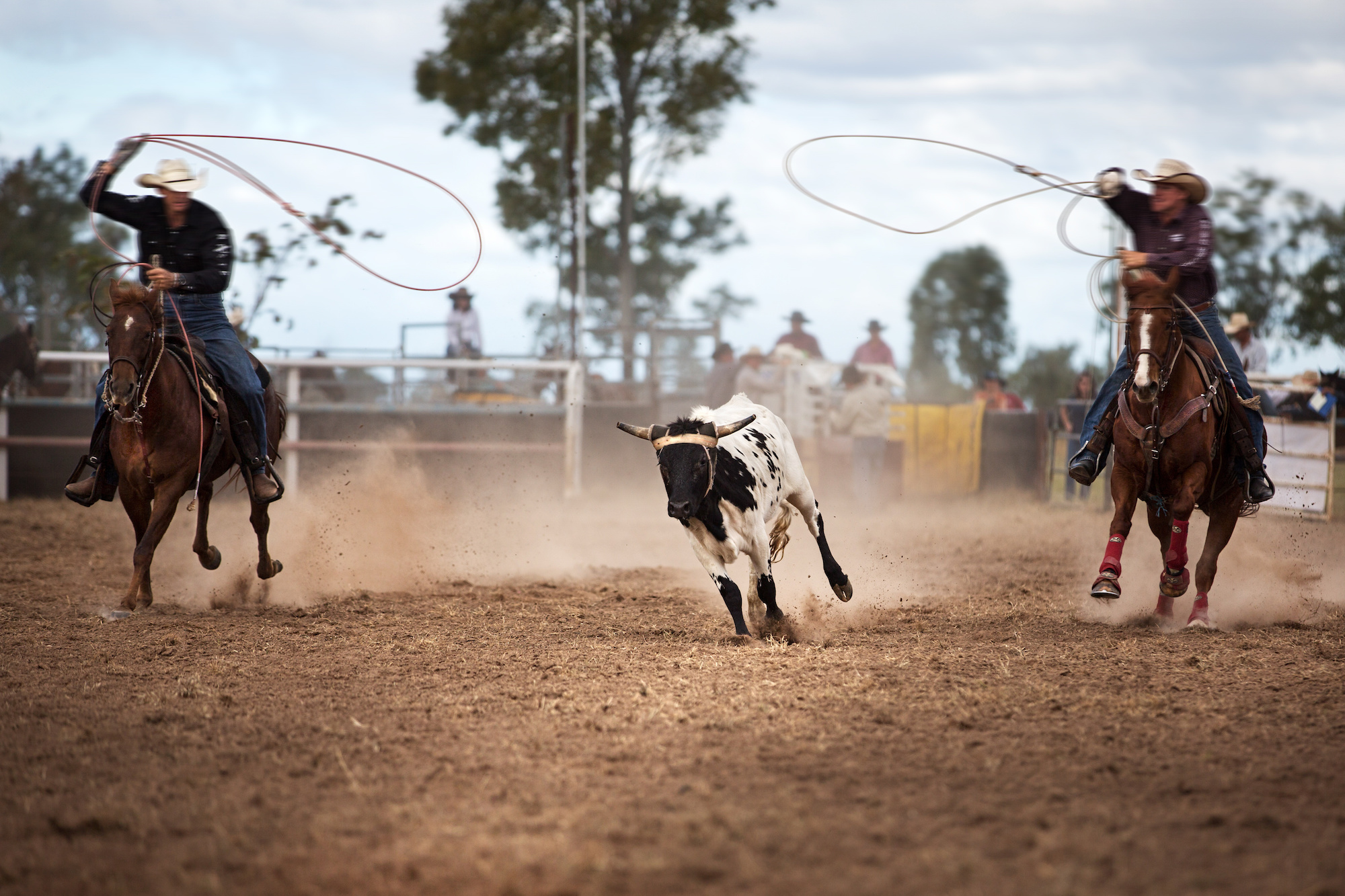
If you want to open your arena for special events and your local roping community, it’s important to take the proper steps. “If you’re going to start holding events, you probably have to look at your permitting and your zoning,” says Sandy. “There are a lot of places in the country where you can build something for personal use, but if you start holding public events, then you need to secure a conditional use permit or some sort of zoning change.” You’ll also want to talk with your insurance provider to make sure you have the right insurance coverage for special events on your property.
Make sure your roping arena and surrounding area are well equipped to host a large number of guests, including bathrooms, shade and shelter, and water sources. If you’re hosting a roping event, consider bringing in bleachers or additional seating and make sure there’s a safe amount of space between spectators and animals. Finally, find ways to creatively market your event to help ensure it’s well attended. Talk with local equine and 4H organizations. Reach out to friends and fellow horse enthusiasts who can help you spread the word. Share event details on social media and on posters at relevant businesses throughout town.
Whether it’s a quaint and small outdoor roping arena, just big enough for you and your stock, or an expansive indoor facility that can accommodate people and horses from miles around, building a roping arena on your property is an excellent way to increase value – both the value of your land and the value of your lifestyle.
Some say the traditional life of the cowboy is fading away, being replaced by modern technology, fewer large ranches, and not as many young people who want to pursue the saddle. Maybe they’re right, but that doesn’t mean ranch life is something to abandon. In fact, as Sandy and Lance point out, it’s a special type of person and community that collects under the lights of a roping arena on a Friday night. “Look at these guys rodeoing and competing against each other; you see them helping each other constantly,” says Lance. “What other sport does that?”
Sandy follows that up with a similar sentiment, “Regardless of how you come to ranching, rodeos, or roping, it’s important to maintain the Western way of life. It just makes better people.”
Indeed.